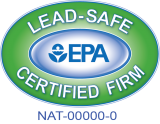What Window Condensation Says About Your Home
[slideshare id=131520233&doc=asw-1901-slideshare-whatwindowcondensationsaysaboutyourhome-190212193507]
As the chilly fall air rolls in, you may notice something peculiar happening with your windows. Despite not having had issues the rest of the year, tiny water droplets are now forming on the panes, fogging up your view of the outdoors. You try to wipe the water off with a paper towel, but alas – it comes right back! What’s going on here, and how do you fix the problem?
Why Is There Condensation on My Windows?
Condensation is a process that occurs when muggy air comes in contact with a cold surface. As the air nears the surface, it cools and contracts, losing its ability to hold the same amount of water. This moisture then adheres to the cold surface – in this case, your window.
Why you have window condensation depends on where the water appears.
- On the Outside – If you can’t wipe the moisture from your window pane and you see it on all your windows, especially in the morning, the condensation is on the outside of your home. This is normal and not harmful to you or your house.
- On the Inside – Take your finger and see if you can draw a line in the droplets on your window. If you can, the condensation is on the inside. This means your home has high humidity. Preventing condensation buildup requires lowering the humidity, but if you or a loved one need to run a humidifier for medical reasons, this may not be an option.
- Between Panes – This can only happen if you have double-paned windows. If you notice one window has water droplets and you cannot wipe the condensation, the seal on your window is likely broken. This isn’t only an annoying eyesore, it also means the insulation value of your windows is compromised and you’d likely benefit from replacement.
Window condensation is largely dependent on the local climate. Cities like Houston have particularly high levels of humidity, even in the fall and winter, which means Texans need to be extra vigilant. In addition to climate, the following situations can also increase a home’s humidity:
- Construction in the past year or so
- Heavy use of water in the home (cooking, showering, etc.)
- Lack of ventilation
- Seasonal change or cold snap
- Fireplace use
- Possession of indoor plants
Ideally, your humidity levels should be between 30 percent and 50 percent to prevent mold, and definitely not above 60 percent. To track your home’s humidity, purchase an inexpensive hygrometer and monitor how the humidity changes depending on the time of year, weather conditions and your activities.
What Does High Humidity Mean for My Home?
Window condensation might not seem like a major inconvenience, but it’s not a good idea to ignore this symptom for too long. High humidity has costly consequences that compound over time.
- Discomfort – If your house is unusually humid, you’re more likely to be physically uncomfortable. High humidity makes it hard for your sweat to evaporate since the air is already saturated, so you may never feel fully clean.
- Health Issues – Excess moisture encourages the proliferation of mold and dust mites. Mold can be toxic, and both can cause allergic reactions, worsen asthma and wreak havoc on your respiratory system.
- Expensive Energy Bills – You’ll either spend more money on air conditioning to keep your house a reasonable temperature, or you’ll waste heat by opening your windows to dry your house out.
Allied Siding & Windows Can Make Condensation Disappear
There are many short-term fixes for humidity problems in your home, including extra ventilation and dehumidifiers, but the best solution might be replacing your windows. If you suspect a broken seal, notice mold or warping around your current window, or simply want to upgrade to more efficient, double-paned windows, it’s time for a professional solution.
Allied Siding & Windows is proud to offer the highest quality brand name windows to homeowners in Houston, Austin and Dallas for the past 25 years. We can assess any damage and recommend the best window replacement to match the look and feel of your home. We even remove your old window without charging extra! Call us to inquire about your window replacement today.
https://www.epa.gov/mold/mold-course-chapter-2#Chapter2Lesson3
See our infographic below for quick tips on how to wipe out window condensation.











